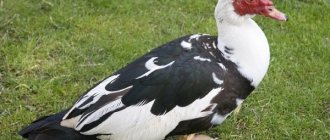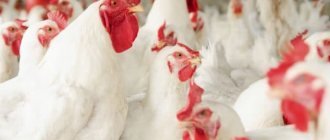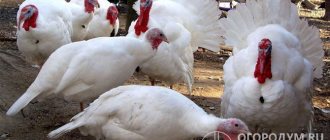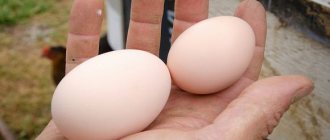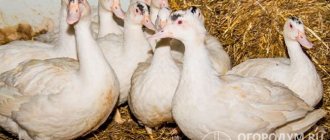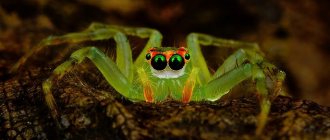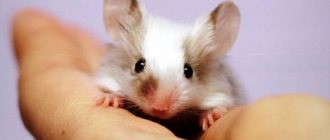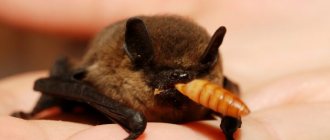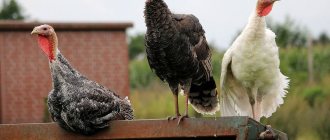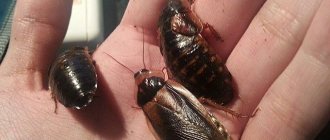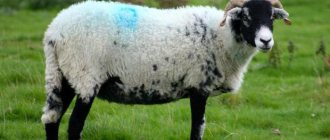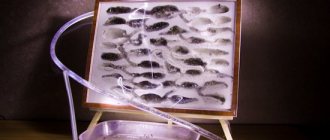There are currently more than 800 breeds of chickens. They all have their own characteristics and different levels of productivity. Some are egg breeds, others bring a lot of meat. But there is a third direction - decorative. Birds from this category are incredibly beautiful, but in addition, among them there are good hens and laying hens with high egg production and weight. In our article we will talk about the most interesting shaggy chickens, the features of their appearance and maintenance in modern farms.
Story
Today, chickens with hairy legs are far from uncommon. But it was not always so. Such birds first appeared in the 19th century. At the moment, more than 30 breeds have already been bred in this direction and each has its own history of appearance. So, Brahma, for example, was brought out in the second half of the 19th century. Shaggy-legged chickens, which were large in size, were brought to Europe from the USA. The breed was developed from old Asian giant chickens. The name is based on the Brahmaputra River.
The history of the appearance of the Chinese silk chicken goes back to the distant 4th century. BC. Aristotle also called these birds “chickens with cat fur.” Birds came to Europe in the 18th century.
The Cochin breed originated in China. The main task of poultry farmers was to develop a breed that would produce a lot of feathers for filling pillows. The Sultan came to England from Turkey in the 18th century. At home, the beauty was kept exclusively for decorative purposes.
Origin of the breed line
Shaggy-legged chickens have many similar varieties used in poultry farming; they are loved for their original appearance and cute fluffy paws, hardiness and cold resistance. The shaggy-footed ushanka breed was bred not so long ago; this happened at the All-Russian Poultry Research Institute; chickens such as Pavlovsky and Orlovsky were taken as the basis, but there is no clear information on this issue.
Outwardly, the birds are similar to their parents, each of the breeds had something to take to create an unusual appearance, the Orlovians inherited fancy sideburns behind the ears, and the Pavlovians got shaggy legs. But there are discrepancies in the shade and color of the birds, which means that other varieties were also present.
Important! The Ukrainian earflaps and the shaggy-legged one should not be confused; the birds are similar in name and appearance, but they are completely different breeds
Features of furry breeds
The main specific feature is fluffy pants with legs. Most likely, you have already noticed that most chickens have bare legs, and shaggy ones are distinguished by an abundance of feathers.
Hairy hens come in different sizes. You can meet very miniature beauties and majestic roosters. For the Russian market, domestic breed lines are especially in demand, since they are the ones who tend to adapt to harsh climatic conditions.
Description of Ushanka Shaggy-legged
Connoisseurs of ornamental chickens classify Ushanka Shaggy-legged as a cute and positive poultry. The unique exterior allows this chicken to always be the center of attention.
The importance of the gait is most likely created by the feather “pants” on the legs - with additional feathers you can’t run quickly and you won’t have much trouble digging in the ground - the extra weight on the feathers framing the legs is of no use to a respectable chicken.
The color, which many poultry farmers call sunny and count among their favorites, gives the appearance of the chicken even more homely and charming. Thanks to the “whiskers”, Ushanka Lokhmonogoy’s head looks small and neat, and the bird itself looks fit, and, if I may say so in relation to a chicken, even slender.
A strong, slightly curved beak, a small comb - in the eyes of admirers of decorative qualities, all this overshadows the main element - the lush feathers on the paws of chickens of this breed.
Advantages and disadvantages
In this matter, everything is very individual, since the determining factor is the breed. And each has its own pros and cons. But if we talk about universal positive aspects, it is worth noting:
- beauty;
- cold resistance;
- unpretentiousness in content;
- healthy meat and eggs.
Among the negative characteristics, pay attention to:
- high cost of hatching eggs;
- average productivity indicators.
For character - only advantages
They do not have that characteristic chicken greed for food: they do not rush to eat, but take food slowly, intelligently and with dignity. Very calm chickens, good-natured and sweet.
Even at chick age, they behave “unchildishly” judiciously and quietly; they are much calmer than other chickens.
True, this is also a minus: chickens of other breeds tend to offend the little Shaggy-legged ones (pinch them, drive them away from the feeder), so it is advisable to keep the young Ushanka Shaggy-legged ones separately.
Unpretentious, with a high percentage of vitality, and, finally, they are simply beautiful.
Popular types
Shaggy-legged roosters and hens attract attention. Today they are of interest not only to experienced breeders, but also to amateur farmers. We propose to consider the most popular breeds that can be found on the domestic market.
Ushanka
There is still no consensus on the origin of the bird. Some believe that among its ancestors are Pavlovsk and Oryol chickens. As proof of this, experts point to “Pavlovian pants” on the legs and a goatee, like the second breed.
You can recognize chickens by a number of characteristic features:
- brown-fiery color with black splashes;
- large recumbent ridge;
- massive body;
- Long neck;
- The large beautiful tail consists of green and black feathers.
Ushanka is an egg-meat bird. The average weight of a cockerel is 3.5 kg, and that of a hen is 2 kg. Laying hens mature at 6 months and, on average, produce 200 eggs per year. Birds get used to their owner and do not get involved in conflicts.
We talked about how to keep and breed this breed here.
Chickens Dominant
They are considered real giants. The birds are squat, with short yellow legs. The cockerels are light in color and the hens are dark. The crest, as well as the earrings, are bright red, the wings are tightly pressed to the body. They are hardy and unpretentious.
The breed produces excellent egg production - 310 large eggs per year.
Brahma
Among the striking external characteristics it is worth noting:
- large strong bones;
- high legs, long neck;
- feathers of contrasting color;
- small tail and wings.
Most often, the breed is raised for meat. Males weigh up to 5 kg, and hens weigh up to 4. As for egg production, laying hens produce up to 150 eggs per year. They tolerate frost well and continue to lay eggs in autumn and winter.
The character of the birds deserves special attention. They are friendly, roosters do not conflict, and get along easily with other breeds.
Chinese silk chicken
This unusually beautiful bird, unlike other shaggy breeds, is shaggy from head to paws. It is grown for its feathers. In a couple of haircuts you can get up to 150 grams of raw material from one bird. The individual grows overgrown in 40 days.
Another distinctive feature is that the bird has five toes. There is a peculiar tuft of hair on the head, which vaguely resembles the hairstyle of a poodle. Due to their lush beard and sideburns, chickens look aristocratic and elegant.
The plumage comes in a variety of colors: from white to black and pearl. The skin on the head is turquoise, and the beak and comb are blue. The photo shows that Chinese chicken is one of the most beautiful.
The breed does not have outstanding productivity indicators. The cockerels and hens are small, the egg production level is approximately 80 eggs per year. It is noted that delicacy meat has medicinal properties similar to those of ginseng.
In addition, the bird gets along well with humans. Recognizes the owner, allows himself to be picked up and petted.
Cochin
Birds appeared in China. Just like the previous breed, they were bred to produce feathers. Tall, majestic birds are endowed with a phlegmatic temperament. They are lazy, sometimes clumsy, but still very charming. But it was their lack of mobility that caused health problems. Birds have a weak heart and digestive problems. Therefore, the selection of food should be treated with special attention.
The breed is large. Even in the photo you can see that the Cochin chicken is distinguished by its large body weight:
The average weight of a male is more than 5 kg, and a hen is 4 kg. It takes me a long time to gain weight in birds. Full maturity is achieved only by 2 years. Life expectancy is 10 years.
Chickens have a pronounced maternal instinct, they happily hatch eggs.
Sultana
You can recognize this ancient decorative breed by several specific features:
- on the head, like a sultan’s headdress, there were luxurious feathers;
- long wings;
- strong body;
- The color is in most cases white, but there are also black individuals.
The bird is active, energetic and friendly. He eats little, so the food should be of the highest quality. The weight of individuals is small - on average 1.8 kg. Egg production is low. But the strength of the breed, in addition to its impressive appearance, is its excellent maternal instinct. Sultanas can hatch eggs of other breeds.
Pavlovsk breed of chickens
It is one of the oldest domestic breeds. The birds take their name from the village of Pavlova, which is located in the Nizhny Novgorod region.
There are two varieties of the breed: silver and golden. Chickens have a dense body, wide wings, luxurious whiskers and a collar. The legs are completely covered with feathers.
Hens can lay up to 300 eggs per year. The Pavlovsk breed tolerates cold well, and chickens fledge quickly.
As for character, everything is not so simple. Pavlovsk chickens are grumpy, restless and timid. Cockerels are very temperamental. They don't have to have a reason to start a fight. In addition, this breed is an excellent flyer, so the birds will not miss the opportunity to fly across the aviary and go on a journey.
Faverolles
The homeland of birds is France. Birds were bred to produce high quality meat.
Both in food and in maintenance do not require special investment or effort. This is exactly the unique option when incredible beauty is combined with high productivity. The meat of this breed has excellent taste. Stable egg production is also noted - more than 180 large eggs per year.
Of the minuses:
- not the simplest character, birds do not accept new individuals;
- Chickens are bad hens.
We talked in more detail about this breed in this article.
Siberian moths
As the name suggests, the birds come from Siberia. The main advantage is that they are not afraid of cold weather. The birds are very beautiful. The black and reddish-gray color of the feather has dark green inclusions. The hens are calm and friendly, and the cockerels protect the flock.
Already at 6 months, birds reach sexual maturity. The average egg production is 200 eggs per year.
We talked about all the intricacies of keeping this breed here.
Age-related decline in egg production
A chicken lives 15-18 years. Theoretically, she is capable of laying eggs that long. However, even such a unique breed as the shaggy-legged earflaps, after 4-5 years, begins to significantly reduce its egg production. Every year, each chicken lays 15-20% fewer eggs than before.
Laying hens are usually slaughtered at the age of 2.5-3 years. The meat of such a bird is not yet excessively tough, and the bird cannot lay eggs as before without paying back the costs of its food. Owners of large factories can change laying hens earlier, because the main thing for them is profitable breeding of birds.
After 4-5 years, the shaggy-legged earflaps begin to significantly reduce their egg laying.
Of course, it is difficult to value such a unique-looking chicken as the shaggy-legged earflaps only for its egg production, so owners often become attached to the bird and do not slaughter it. There are cases when a devoted hen rushed in response even after 5-10 years.
You can improve egg laying using additional methods. To do this, the chicken must receive a good, balanced diet, with the obligatory addition of minerals. Daylight hours less than 12 hours have a bad effect on the egg production of chickens.
Some owners talk about a decrease in egg laying due to the lethargy of the rooster - but in fact it does not affect the intensity of egg laying.
It is possible that the hens did not lay eggs less, but simply changed their laying location. It is worth looking in the secluded places of the chicken coop for a place for a new nest. This behavior is typical for a chicken, because she lays eggs in order to have chicks.
Specifics of maintenance and care
Each of the breeds considered has its own characteristics. Some people need special food, for others it is important to monitor their diet so that obesity does not develop due to a sedentary lifestyle. But the general rules for everyone remain the same:
- Make sure you have a spacious poultry house where the chickens can roam.
- The chicken coop should be clean and dry. Drafts, rodents and other animals should not enter here.
- It is better to make perches low.
- Follow the regimen strictly. This applies to feeding, light conditions and humidity levels.
- Disinfect regularly.
- Don't forget to vaccinate your chickens on time.
Birds must have access to food and water. As soon as you see that an individual is inactive, refuses to eat, or shows any other signs of illness, immediately isolate it and call a veterinarian.
Raising chickens
Reproduction of purebred chickens is not much different from ordinary ones: incubation, “work” of a hen, or buy ready-made chickens.
Incubation and brooding by laying hens
For incubation, eggs are collected for no more than 10 days, providing them with good ventilation and turning. Select medium-sized specimens of regular shape without spots. They cannot be washed. Otherwise, you should maintain the temperature and humidity in the incubator at the recommended levels and turn the eggs promptly for 21 days.
Calm and “correct” hens - Siberian moths and Ushankas. All the rest are very timid, require care and peace, and are fickle in their desire to breed. Hens that are heavy can crush eggs, which should be taken into account when breeding, for example, Cochins.
In order not to fall for the tricks of unscrupulous sellers, it is better for a novice breeder to ask for the help of an experienced poultry farmer or to purchase chickens from a poultry farm, if possible.
conclusions
- The main feature of all shaggy chickens is their incredible plumage. Not only can furry boots have legs and toes, but the breeds also feature amazing head tufts and sideburns.
- As a rule, shaggy chickens have average egg production. But there are also exceptions. For example, the Pavlovskaya and Dominat breeds produce more than 300 eggs per year, and Brahma chickens weigh on average 4.5 kg.
- Almost all breeds tolerate frost well.
- Some breeds, such as the Chinese Silk or Cochin, are bred for their feathers.
- Pavlovsk chickens are excellent fliers, so do not forget to install a roof in the aviary.
Cochin
Cochin is originally from Indochina; it appeared in Europe after the 40s of the 19th century. He is the ancestor of most meat and egg-meat hybrid crosses and actively participates in crossing.
It features a massive body and dimensions. Individuals are tall, growing up to 0.7 m. The plumage is lush, spherical. The paws are completely covered with feathers, so it survives well in cold regions. The color is bicolor (black and white), black, white, brown, and exotic striped is rare.
The productivity of this cross is average:
- egg production – up to 120 pcs. per year, the average egg weight is 50-60 g, productivity is maintained in winter;
- weight of laying hens - up to 4 kg, roosters - up to 5 kg.
Breeding
Crested chickens can be laid on eggs from 7 months. During this period, these representatives of the breed make excellent quogs. First, dummies or fake eggs are placed under the hen. When the quonka finally sits down to hatch them, it will be possible to place hatching eggs instead of a dummy. It is impossible to do without an incubator in the case of poultry breeding.
To hatch chickens, it is permissible to use eggs that have a shelf life of no more than 5 days. They should be stored with the pointed half down. The air temperature should be no more than 12 degrees, and the air humidity should be 80%.
You should place no more than 15 eggs under one hen. Previously, the incubation material must be rejected by examining the eggs under an ovoscope. The hen will warm the eggs for 21 days.
If we are talking about incubation, then you need to put the eggs in the incubator in the same way as under a chicken. In the first 10 days the temperature should be about +37.9 degrees, from 10 to 20 days - +37.3 degrees, the last day - 37 degrees. The hatched chicks are moved into a brooder with a temperature of 30 to 32 degrees.
Frequent illnesses
Birds have strong immunity and almost never get sick. Survival rates among young and adult birds are 97-99%. Chickens do not suffer from colds.
The greatest danger to them is parasites. In addition, ticks carry serious infections. To minimize the likelihood of pathologies occurring, it is recommended to perform vaccinations and preventive treatments.
The Siberian moth is considered a rare breed. At the same time, it has many advantages. That's why many farmers want to raise these birds.
Varieties
This popular breed includes several representatives. Let's take a closer look at their description and distinctive features.
Legbar
These representatives of the breed are distinguished by very beautiful and eye-catching plumage of silver-gray or golden-straw shades. Roosters have characteristic stripes on their feathers, which are much more pronounced than those of females.
The weight of adult males reaches 2-4 kg, and females - 1.5-3 kg. This breed is distinguished by excellent health, good immunity and high activity levels. Females lay eggs at 4-5 months. Their sexual activity continues for 3 years.
The eggs of laying hens of this species are distinguished by a sky blue color or an olive tint. Over the course of a year, one hen can produce 280 eggs, the average weight of which is about 56 g. These birds are friendly and not prone to conflict. They need a barn with an area of at least 70 square meters. m.
Padua
Representatives of this crested breed can have the following natural colors:
- white;
- black with a greenish tint;
- golden ocher;
- blue with arc-like stripes;
- gray-blue.
Earrings are usually barely noticeable or completely absent. They have a medium sized head. The crest of these representatives of the breed gracefully falls to the back half of the neck and to the sides. The neck is usually slightly arched, framed by a thick mane. Birds belong to the meat and egg category. Paduans have a very interesting and beautiful appearance
Gudan
Representatives of this breed have good snow-white plumage. They are characterized by a lush mane on the neck, which is the beginning of an equally lush and solid crest. These white-crested beauties naturally have a richly colored comb, shaped like a butterfly wing. The beak grows short and slightly curved, similar to a hook. Under the beak there are voluminous sideburns that form a beard.
Houdans have medium-sized wings, and the plumage on the tail has a characteristic curved shape. The main coloration of these individuals is as follows:
Polverara
This decorative poultry is characterized by excellent immunity and unpretentiousness. Her head has a crest with small horns, and there is no comb. The earrings are almost invisible. The beak usually grows quite powerful and has a cream color. Birds are distinguished by their shaggy legs, but the hair on them is often shorter than on the rest of the body. The same can be said about the polverara's neck. The tail is small and straight. Laying hens have larger chests and bellies than cockerels.
Sexual maturity of these birds usually occurs at 8 months. In one year, laying hens can produce 150 eggs, the weight of which is about 40 g. Egg production persists for 4 years, after which it sharply decreases.
These birds have a good disposition and a good level of mobility. They do not develop very well in a cage because they need more freedom. Walking should be done in fairly large areas.
Russian Crested
This is a very cute and graceful bird of medium size. She is well built and looks beautiful. Its beak is quite powerful and slightly curved. The color can be different - from yellow to almost black. The earrings stand out well, the comb is leaf-shaped, and the lobes are red in color with white spots.
There are several official colors of this poultry:
- blue;
- black;
- red;
- calico;
- salmon;
- cuckoo;
- black and gold;
- black and silver.
Chickens with a crest on their heads are distinguished by the fact that they have it more expressive than that of roosters. Usually the crest is combed back. Representatives of this breed also belong to the meat and egg category. In a year, a Russian Crested hen can produce approximately 200 eggs. Their weight is approximately 56 g. The shell has a characteristic golden or cream color.
Ukrainian Chubataya
This is a valuable breed, distinguished by its unpretentiousness and beautiful appearance. Cockerels wear a leaf-shaped comb, slightly tilted to one side. In chickens, the crest has a round structure. The body of these domestic birds is slightly elongated, ending with a solid tail.
The most common colors of the Ukrainian Chubby are as follows:
There are many more varieties of crested chickens. For example, Dutch white-crested, Chinese silk, Polish Chubatka and others. All of them are distinguished by their unpretentiousness and spectacular decorative qualities, which sharply distinguish them from other breeds of poultry.
Where to buy in Russia?
Of course, it is most reliable to purchase a bird in the places where it was selected, where they know everything about it - from its behavior to the order in which feathers are placed, and where they can provide professional advice on maintenance and care.
The birthplace of the breed is the All-Russian Scientific Research Technological Institute of Poultry Breeding. Now, on its basis, several subsidiaries have emerged, which, most likely, can also offer poultry farmers this wonderful chicken - Ushanok Lokhmonogikh.
- All-Russian Scientific Research Technological Institute of Poultry Farming.
Address: 141311, Moscow region, Sergiev Posad, st. Ptitsegradskaya, 10 Tel. /fax E-mail: [email protected] - Zagorsk experimental breeding farm VNITIP.
Address: 141311, Moscow region, Sergiev Posad, st. Maslieva, 44 Tel./fax; 546-16-30 E-mail
Productivity trumps decoration?
Ushanka Lokhmonogaya is not a small chicken.
Even females have a considerable weight - from two and a half kilograms. Roosters weigh about 3 kilograms. Chickens will lay large eggs, up to 60 g, the shells of the eggs are light brown, completely matching the color of the laying hens.
In a year, one hen can provide a farm with 150-170 eggs; females begin laying eggs at the age of six months. In small household farms, it was calculated that at the beginning of the egg-laying period, they received about seven eggs per day for 10 pullets of Shaggy Earflaps.
Cute and positive chickens with an important gait - Shaggy Ushanka breed
Now on poultry forums there is simply a boom with earflaps (or earflaps). Everyone argues until they become hoarse and their keyboards are broken about two breeds – Ushanka Lokhmonogoy and Ushanka Ukrainian.
These are two different breeds, similar in name. But for some reason, almost all poultry farmers consider the Shaggy-Legged Ushanka a “misunderstanding” and an “unfortunate bird.”
Why so unhappy? Nobody can really explain it. Information about this breed is minimal. What we managed to find, we saved and processed everything for you.
And, having carefully analyzed all the data, we must say that Ushanka Lokhmonogaya is a completely worthy bird for a homestead: both as a decorative and as a productive bird.
